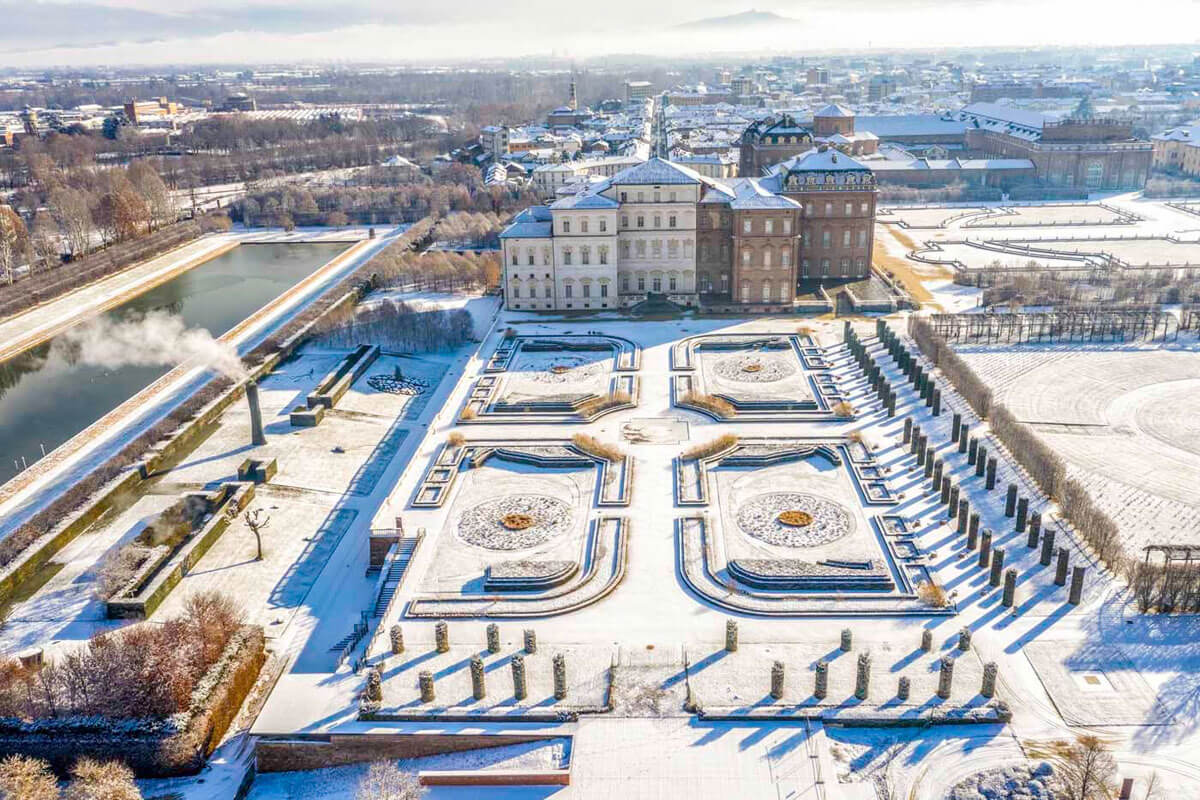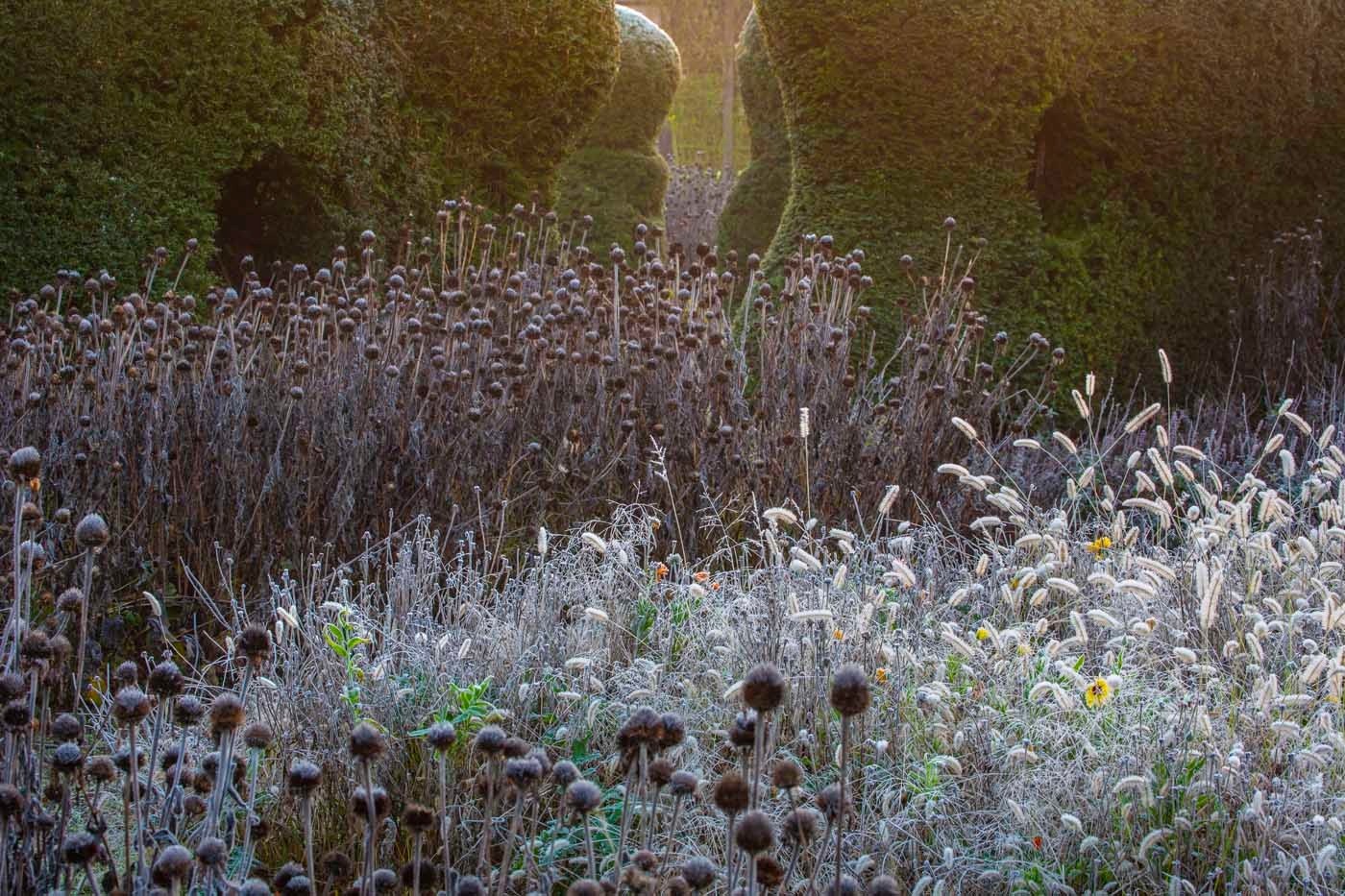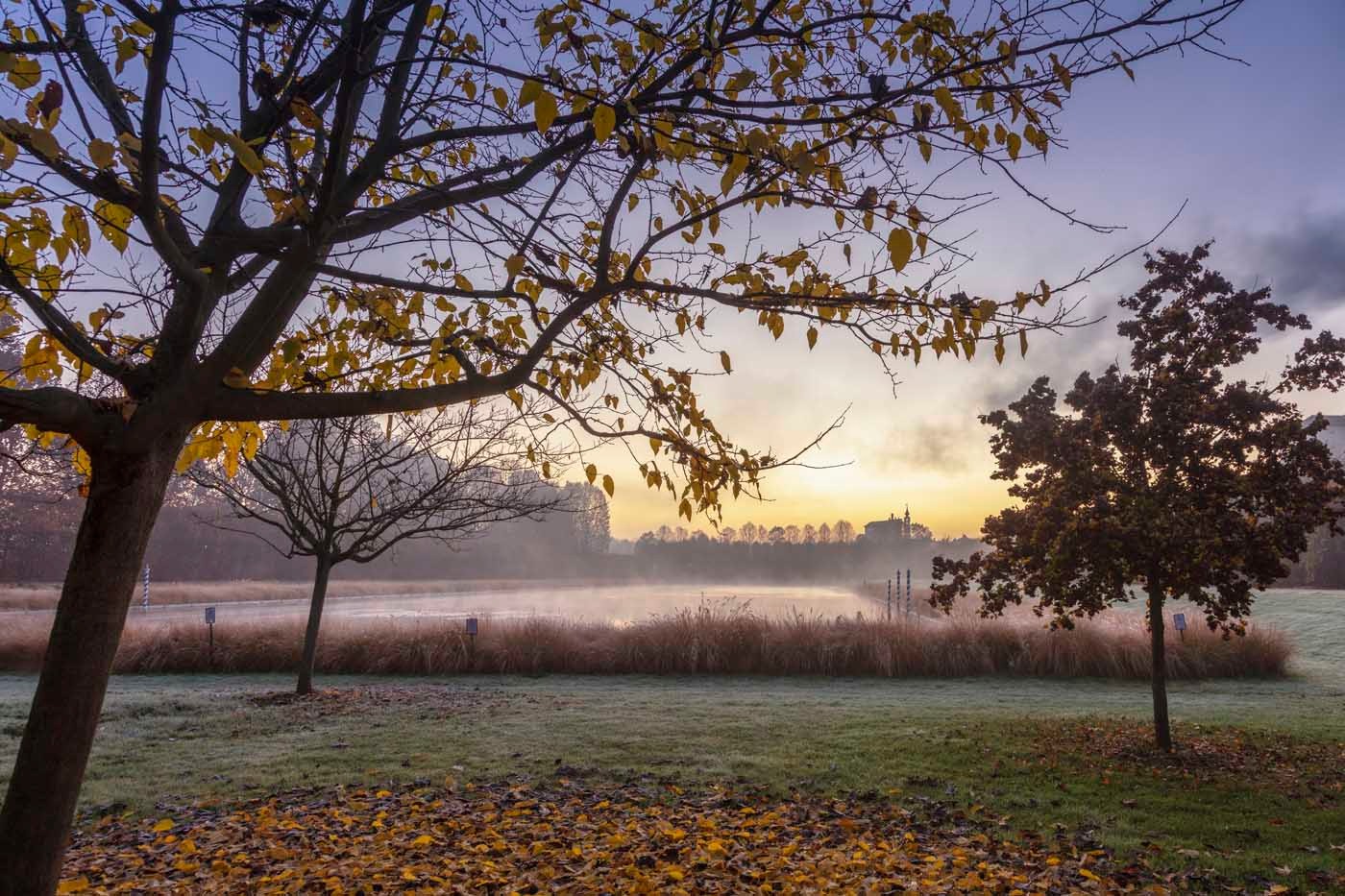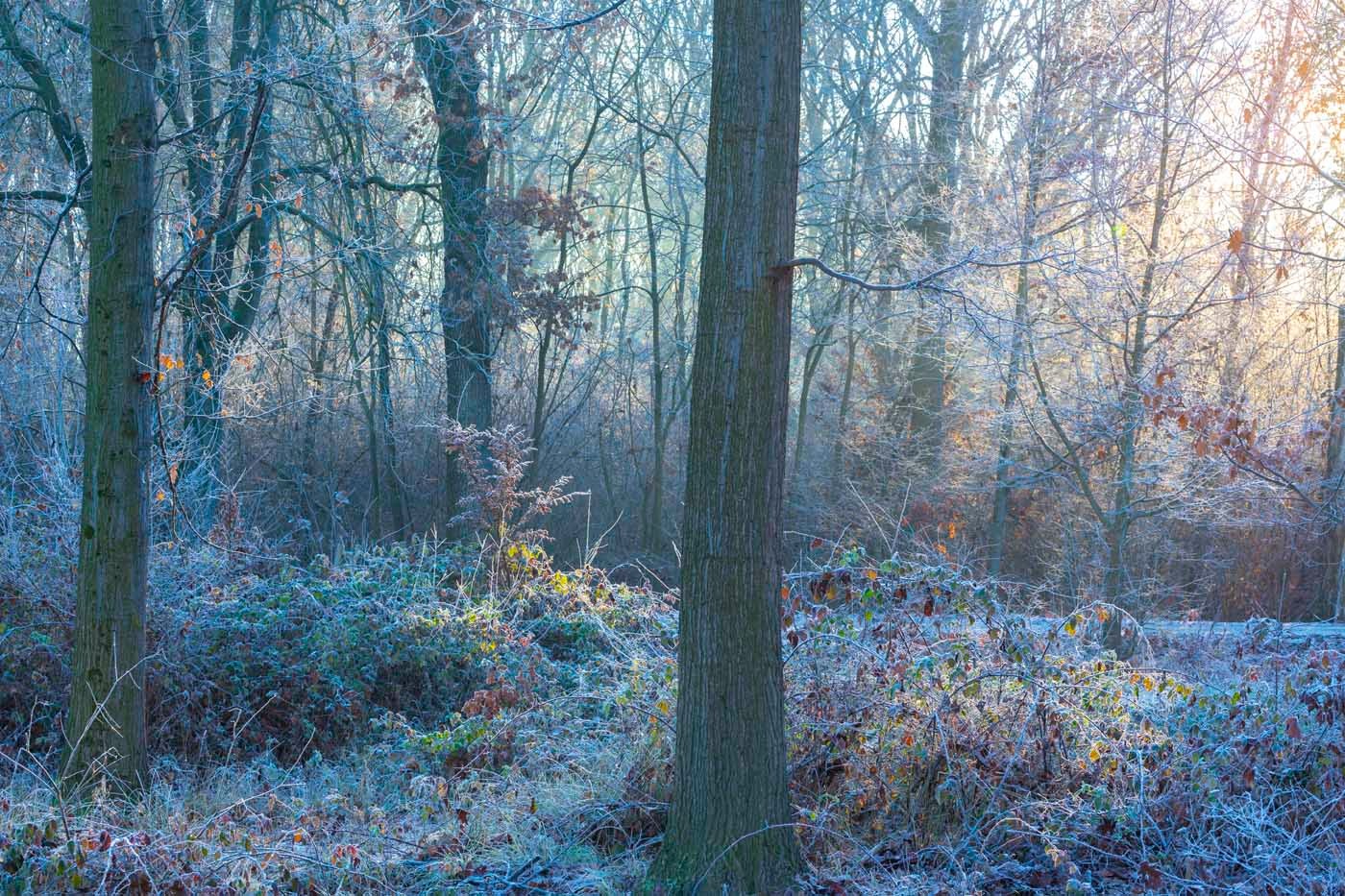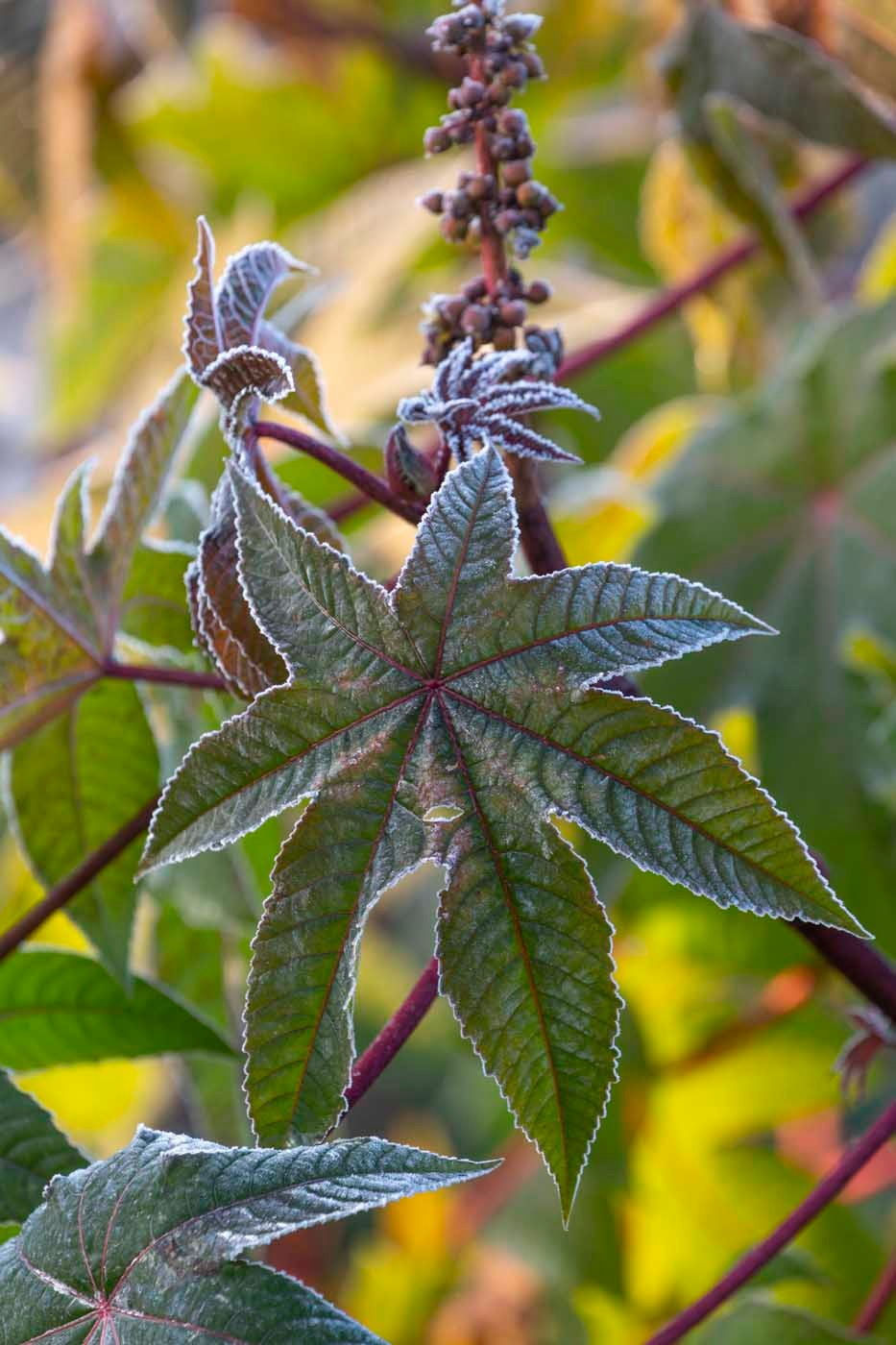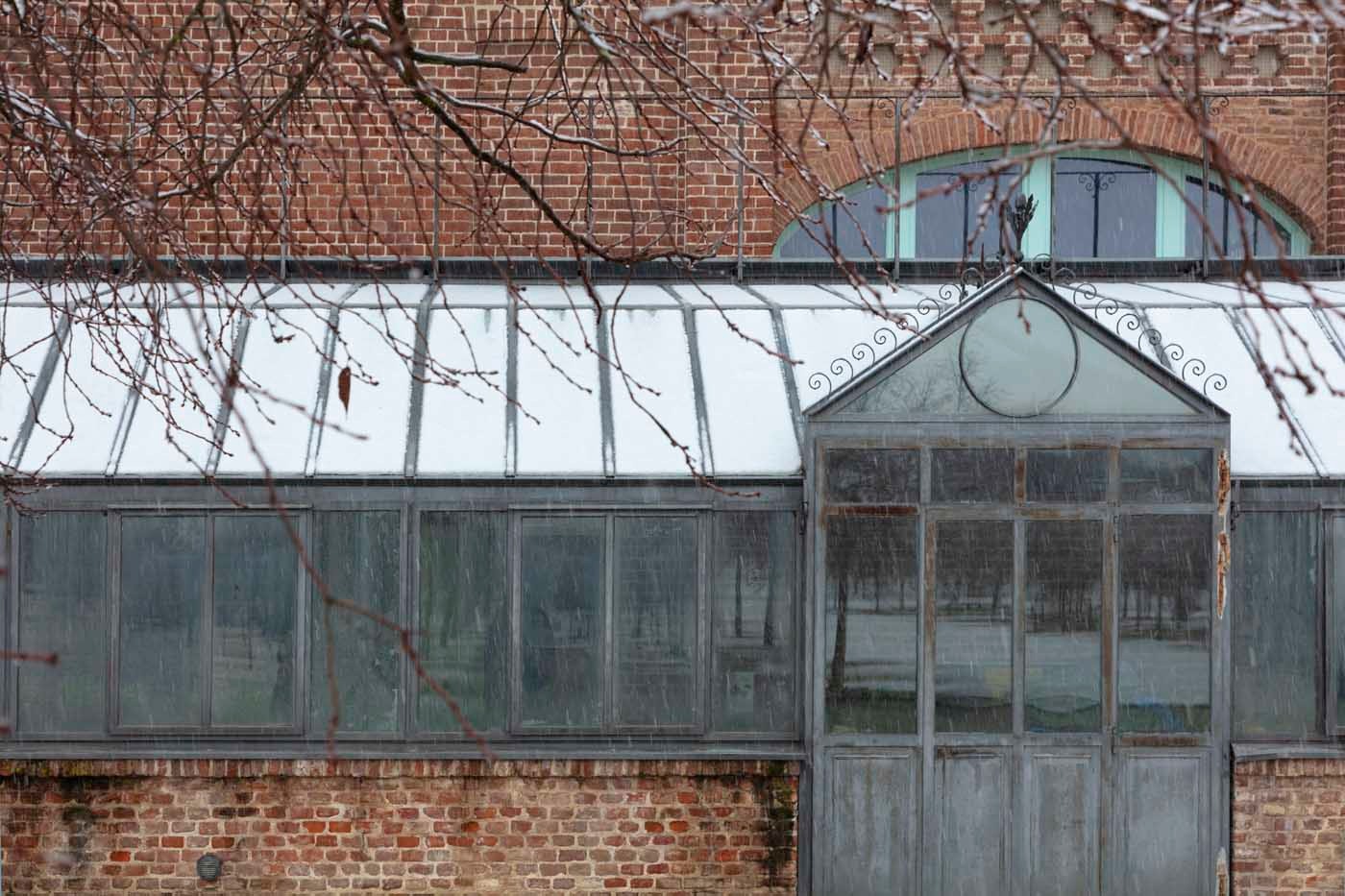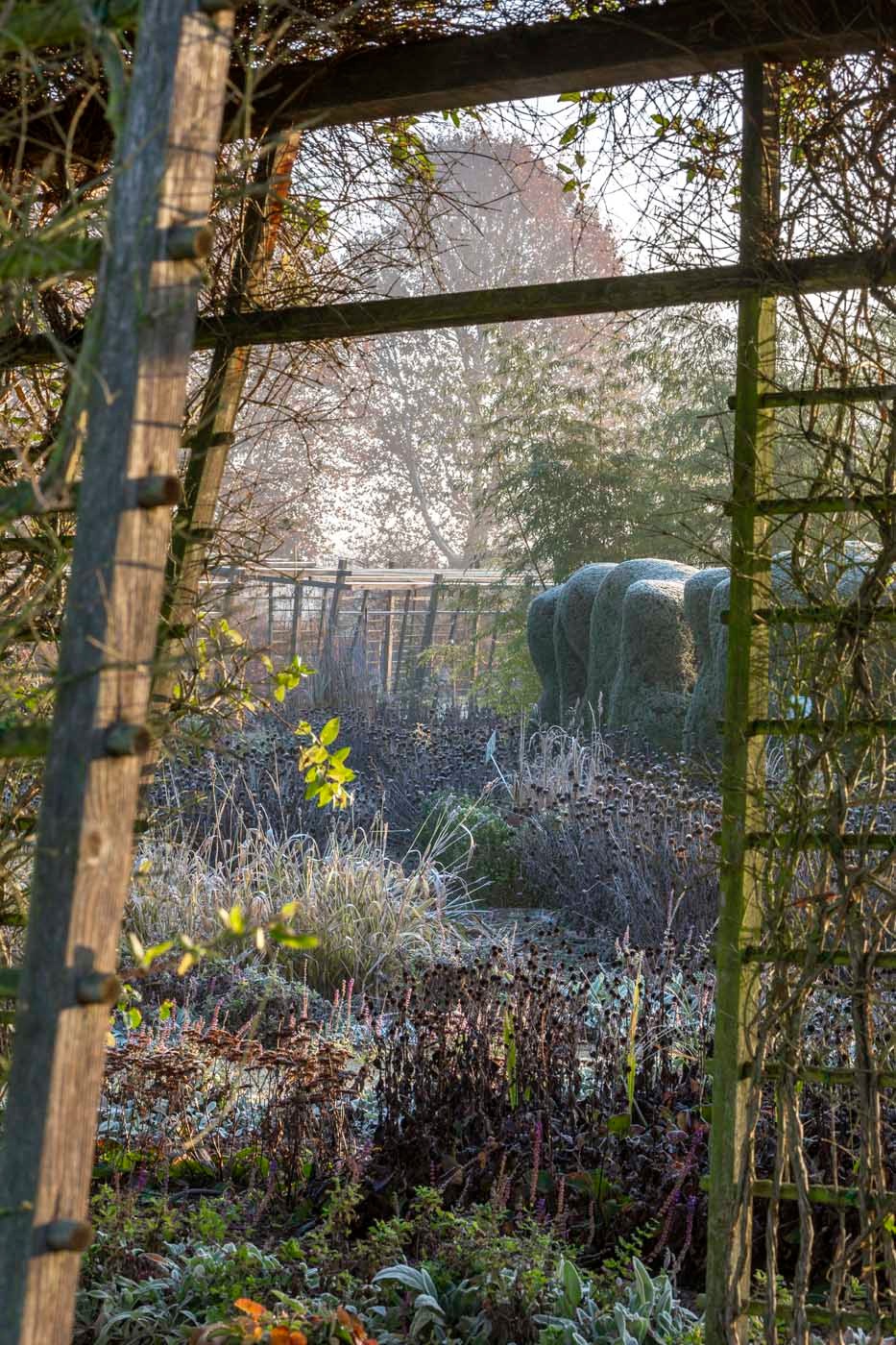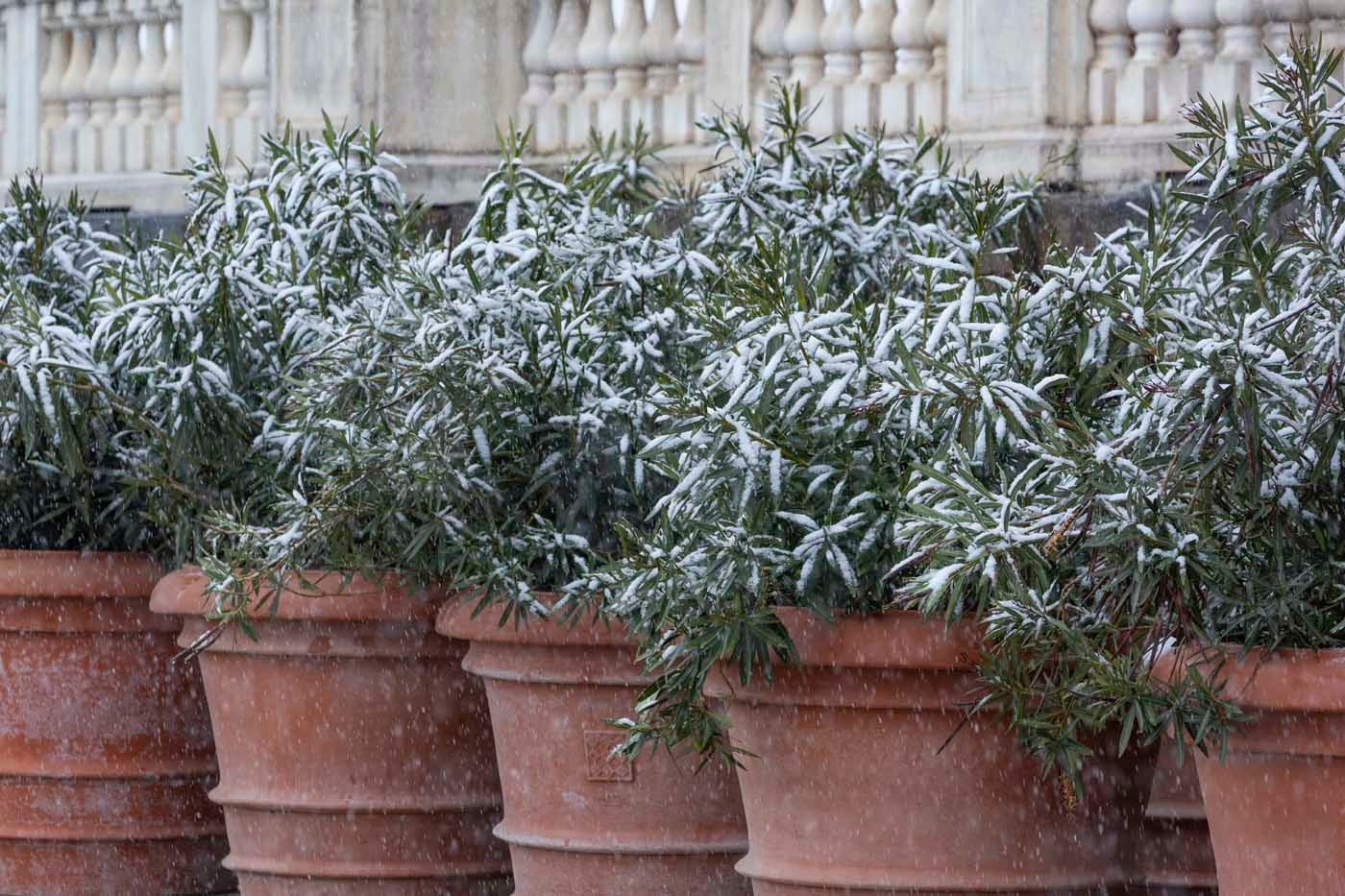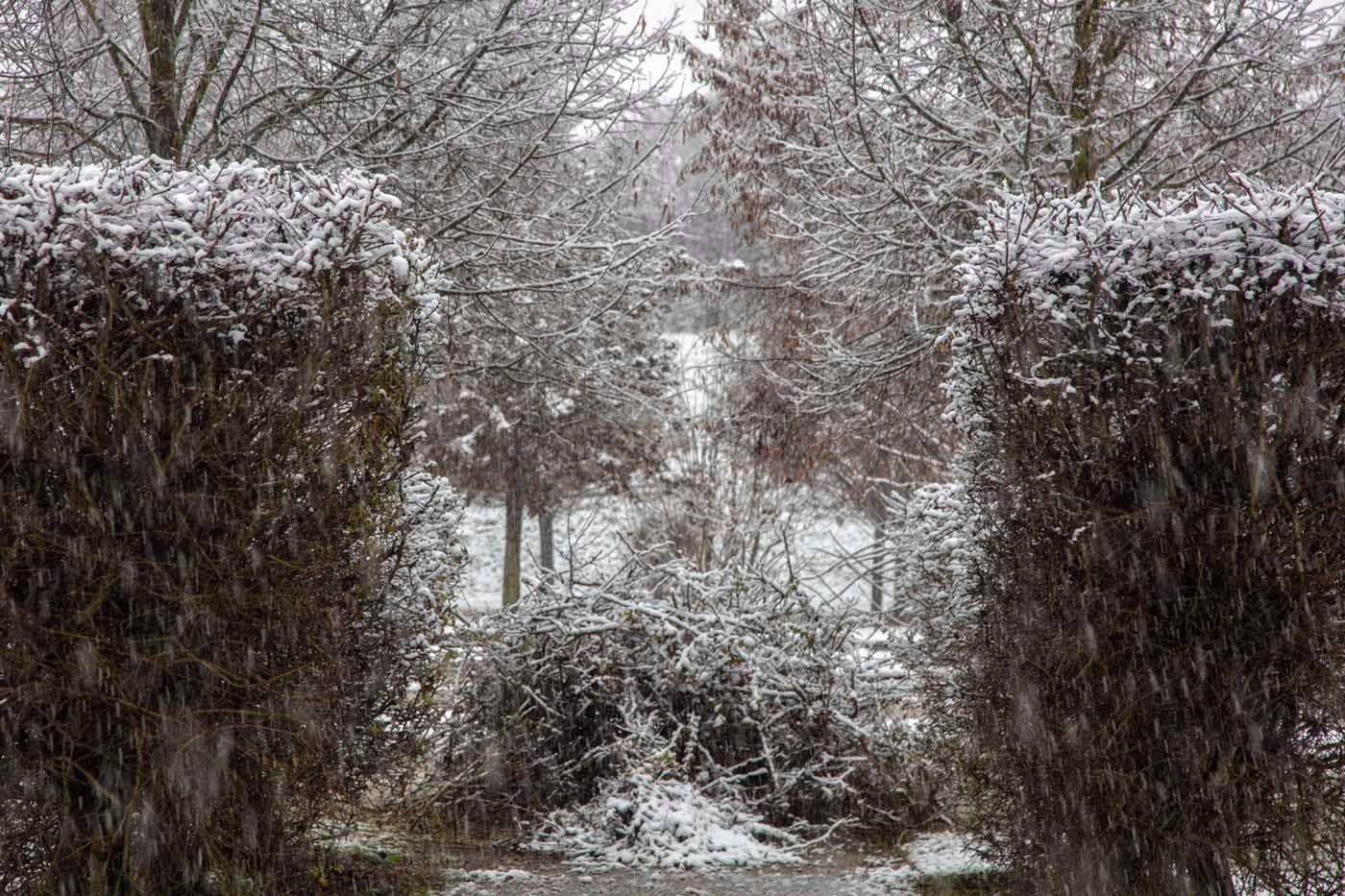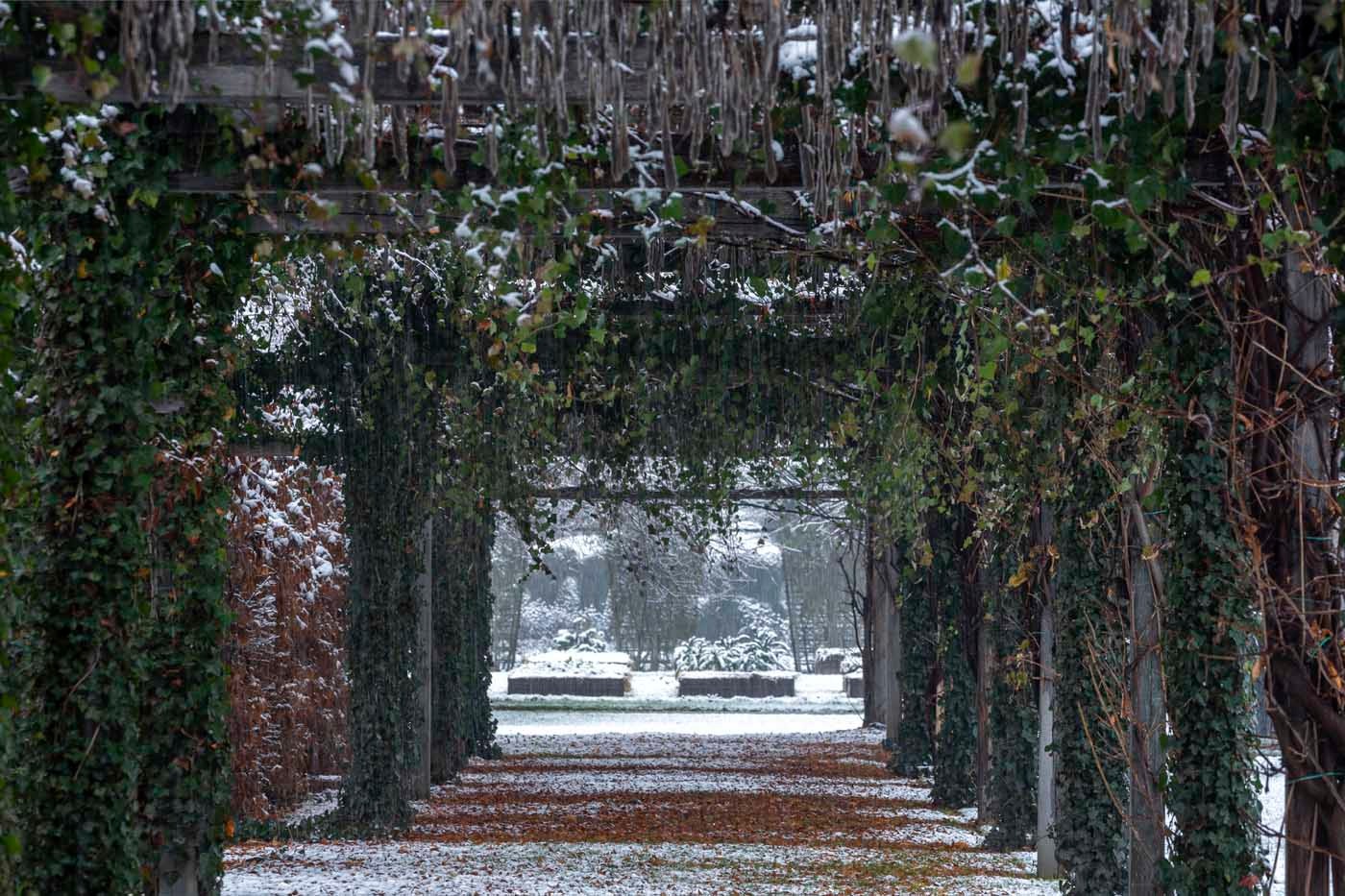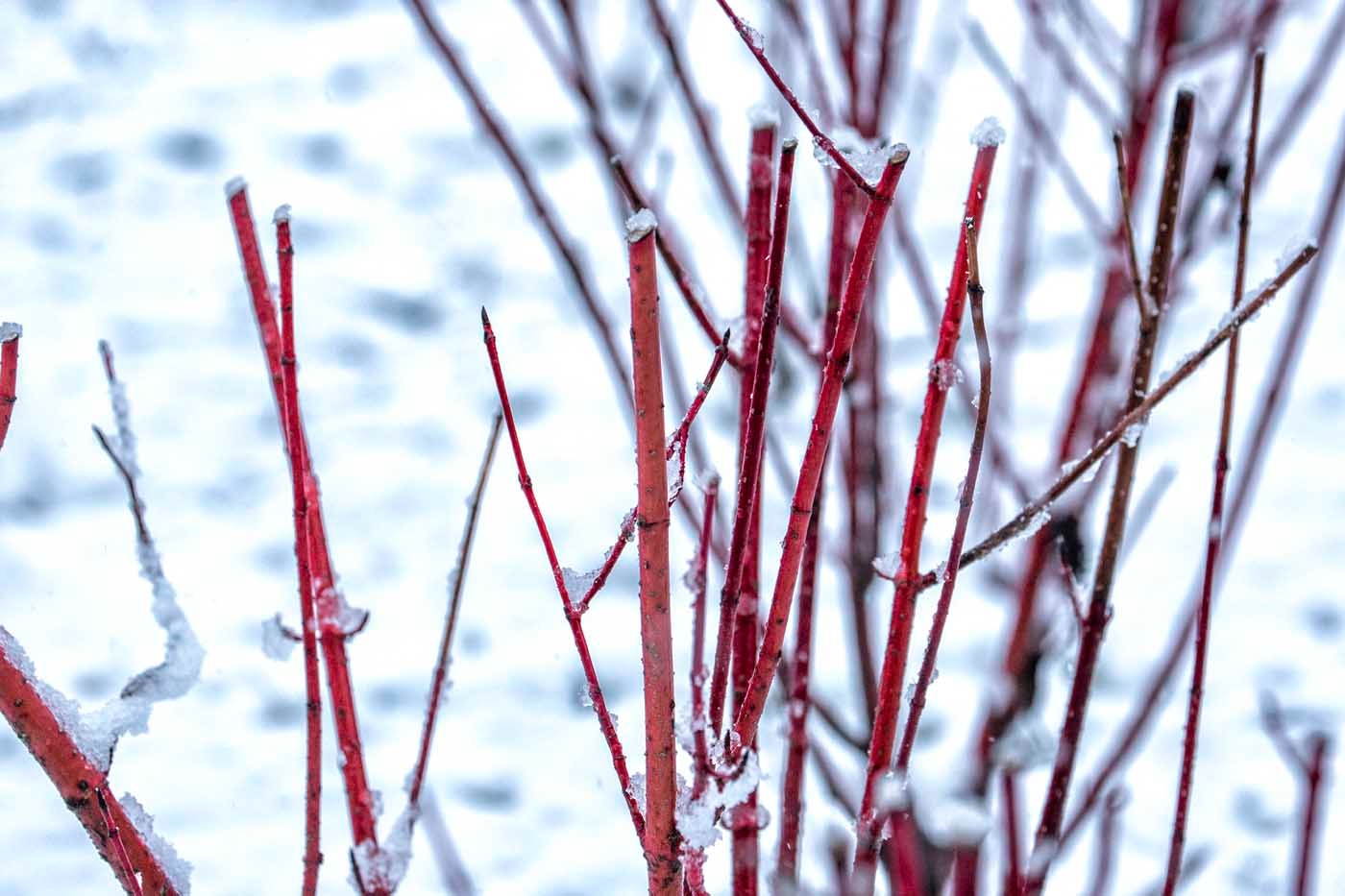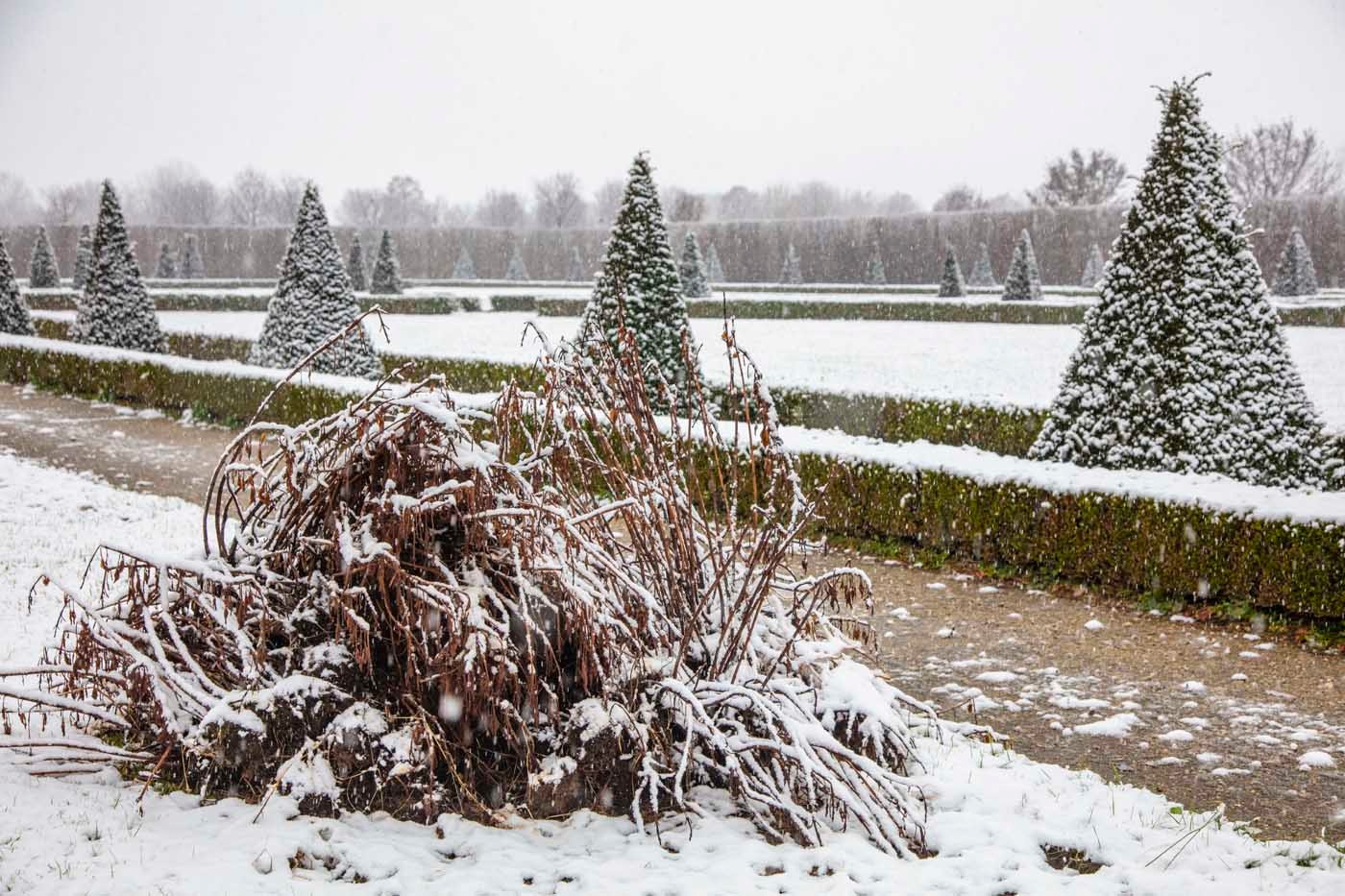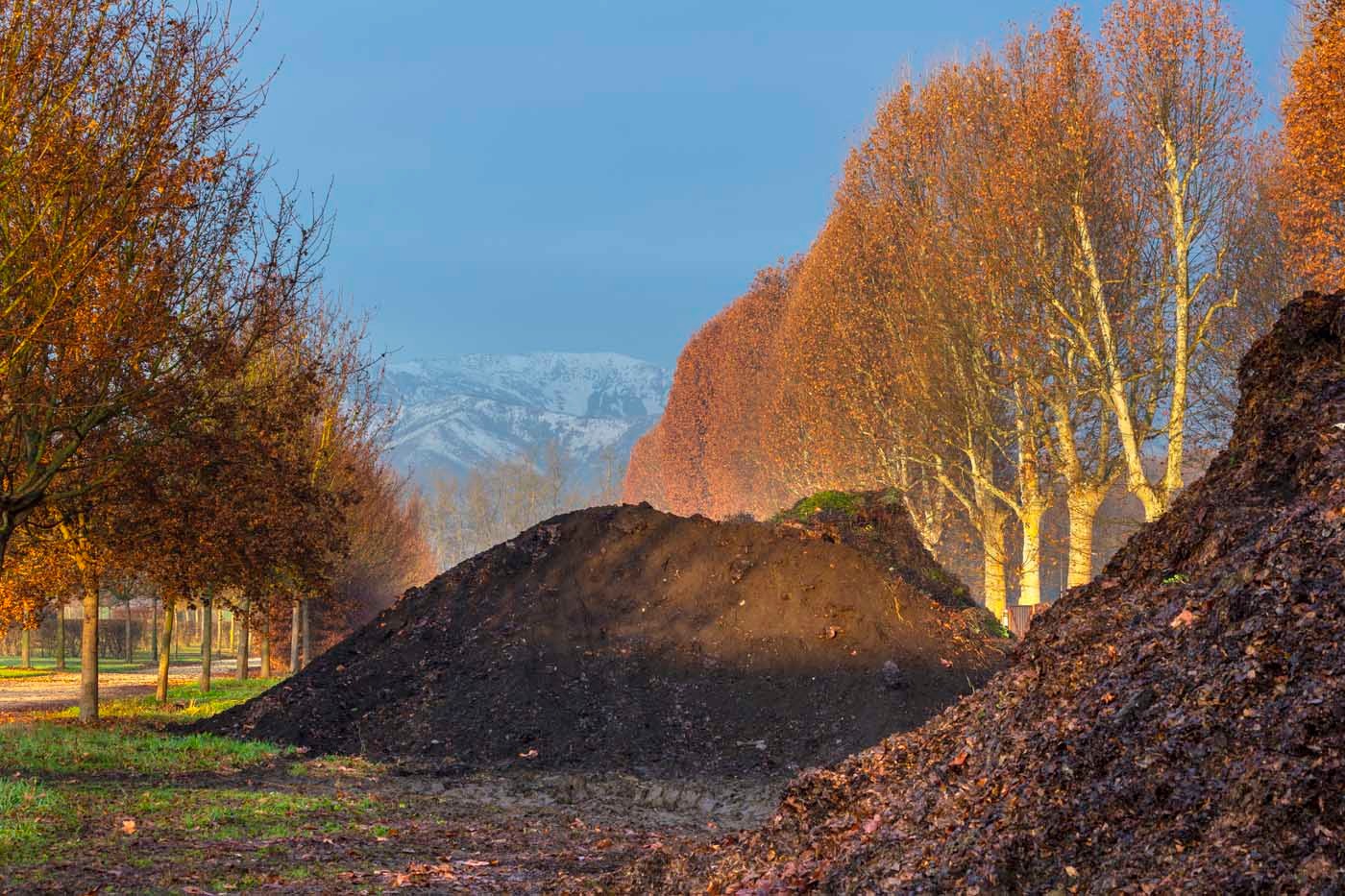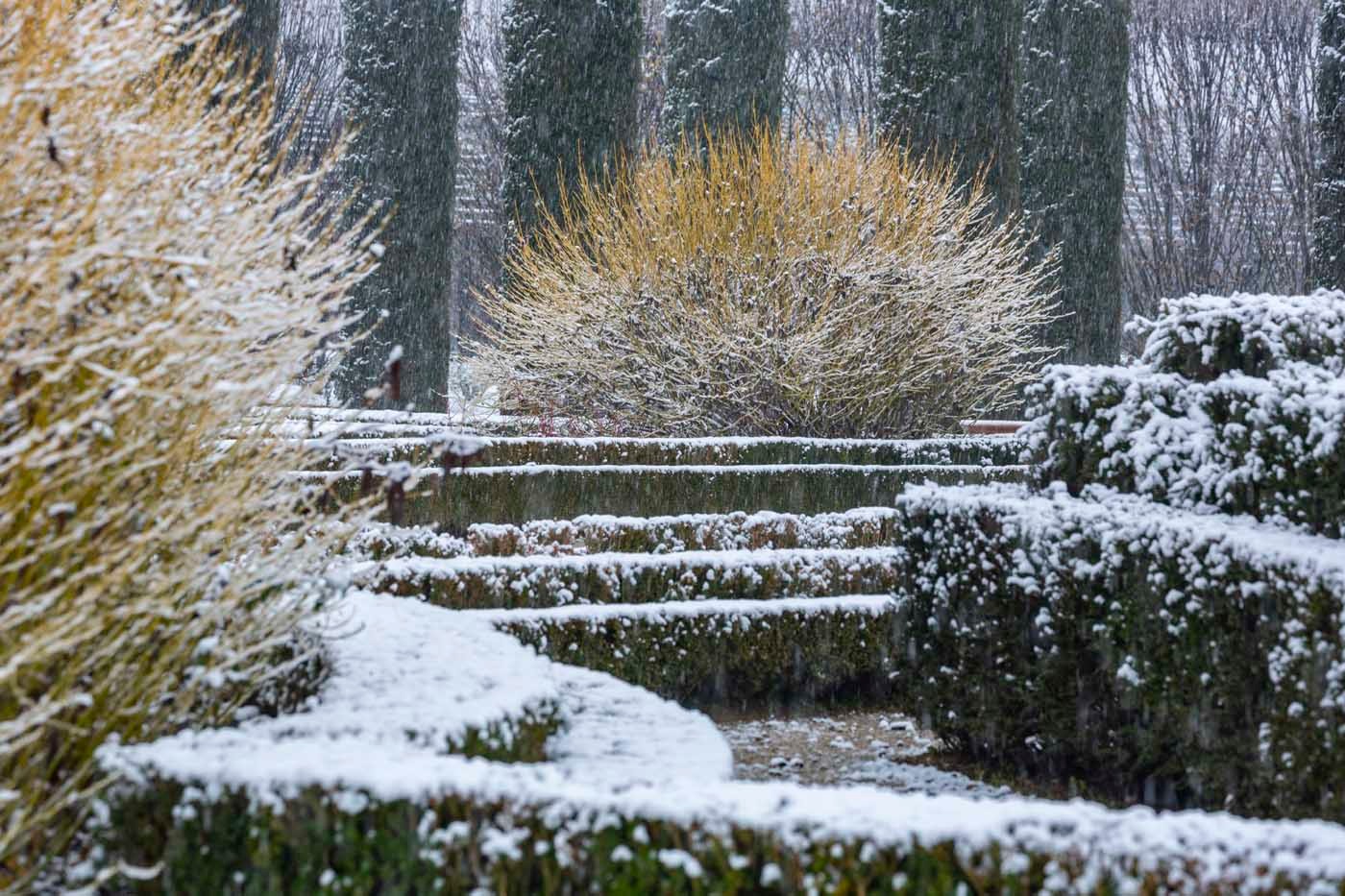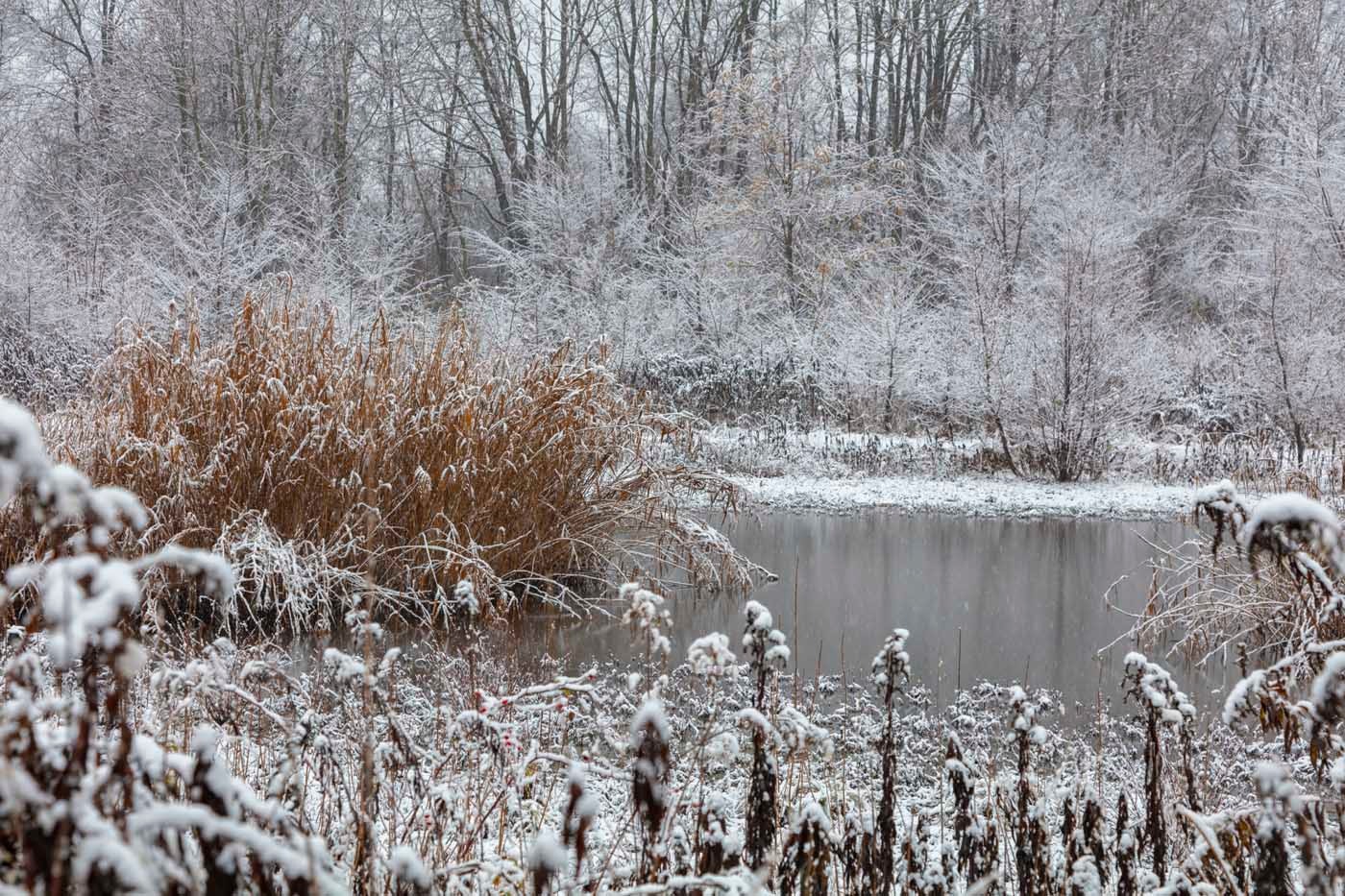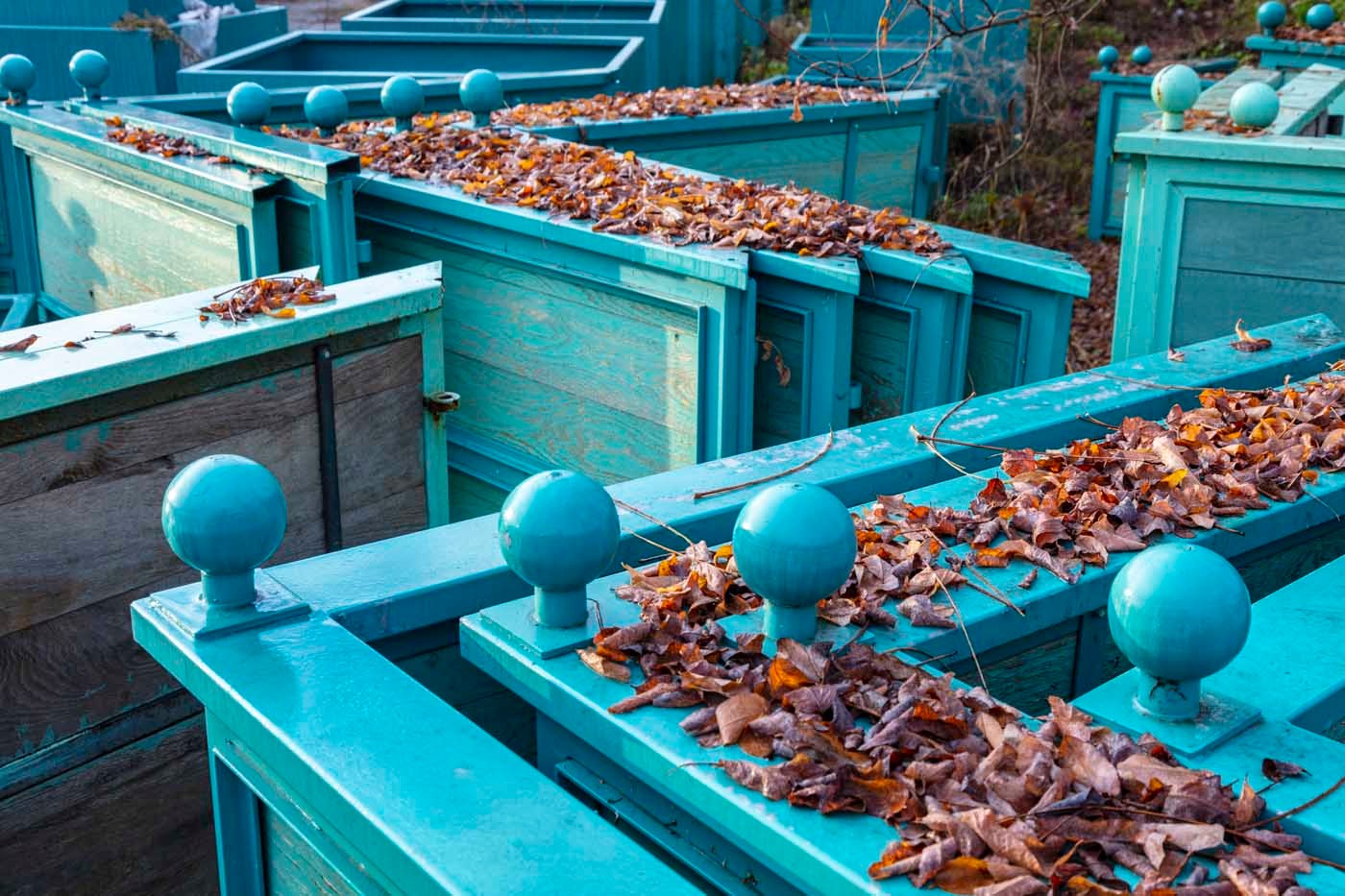Sixty shots of stunning seasonal scenes to explore, investigate and touch, letting the soil run through your fingers. These are our Gardens: waiting for you to discover thirteen years of secrets. Even the Mandria, in its nest of dense greenery, is willing to share. Like blocks of soil, these photographs fit together to form the puzzle that is the landscape of the Royal Venaria. A kaleidoscope of miniature worlds suspended between ancient memories and new adventures. So much to see, you might lose yourself: well, perhaps that’s the idea?
zolla.1
Two large eyes peer into the sleeping, frozen garden. Stalks, spikes and flower heads are about to dissolve into nothing: winter demands silence, and stealth. The yew hedges in the centre of the beds form into a room, with even a peephole to look through – almost an invitation not to disturb. Their strange, irregular contours evoke an English mood; the trees are sculpted according to their natural bearings, encouraged with light but regular pruning. An example of the art of topiary in constant but imperceptible evolution.
.Echinacea purpurea(pdf)
.Pennisetum alopecuroides(pdf)
.Taxus baccata(pdf)
zolla.2
Siberian atmospheres at sunrise. The frosted meadows crunch underfoot, steam rises from the water’s surface and the fountain grass shivers in the chill nocturnal air. Near the pinnacle of the Annunziata, in the Venaria’s old town centre, the illusion continues. Mulberries and field maples stand guard over the water’s edge. The fallen leaves will be raked from the grass to prevent rotting, but will remain at the foot of the trees, like their shadows. Mulching helps to protect against changes in temperature. When the grass starts growing again it will be mown, but not too closely: late frosts are always a risk.
zolla.3
Don’t be put off: at the Mandria, woodland is woodland. A chaotic tangle of branches, sticks and thorns is everywhere, even in the darkest recesses, where Nature is free to make, and unmake. Even the brambles have their own purpose, sheltering the young saplings from young trees from assault by deer, enriching the soil with their fallen leaves and offering their fruits to passing birds. A few cuts here and there is all it takes to maintain balance: the trees will grow, their shadows intensifying as the brambles recede.
zolla.4
Make the best of a bad situation, as gardeners are fond of saying. And this situation certainly is concerning. These mild winters are because of global warming: an extremely bad sign, although in northerly climes it can make life easier for many exotic species. The castor oil plant, with its palm-shaped leaves, grows large and splendid in the outdoor beds almost until Christmas. Under the winter frost, it loses its glory to then thrive again in spring – but almost never dies. Even here, it acts like a true perennial; a tropical touch that blends perfectly into the intriguing botany of these historic Gardens.
.Ricinus communis(pdf)
zolla.5
A garden has its own migration routes: start and end points that follow precise paths with astonishing interconnections. The African lily plants, removed from the parterre in autumn, gather inside the small greenhouse in the park, planted in soil-filled caissons and arranged according to variety. Any overly-dense bushes are divided, taking care not to damage the fleshy rootstock. This year, several plants were left outdoors: will that one degree higher be enough to protect them? The thickly-mulched pots behind the wall should help. In a garden, it is good to dare, but better not to gamble.
.Agapanthus africanus(pdf)
.Agapanthus ‘Ben Hope’ (pdf)
zolla.6
Spent, shrivelled, somehow anarchic. Almost unpresentable, you might say. Yet winter gardens show us a different kind of beauty: wilder and less complacent. The tangles of Japanese honeysuckle on the pergola, the disorderly bursts of bamboo, the buckets of sedum and rudbeckia, the overblown bushes of reed grass: for a moment we can enjoy the abandonment, before the great winter clearout re-establishes order. The grasses will be cut at the foot, the beds layered with manure and protected from the leaves. Until then, the bees and birds can take what they can.
.Lonicera japonica ‘Halliana’
.Rudbeckia fulgida ‘Goldsturm’
.Sedum telephium ‘Matrona’
zolla.7
The latest arrival at the Venaria: enormous terracotta pots from Impruneta, one metre in diameter, instantly provide a new home for the oleanders. They could not ask for better. This famous terracotta, skilfully fired, is not just about aesthetics. The pots protect the plants from root rot and sudden changes in temperature. At the mercy of winter frost, the oleanders gratefully cluster together along the façade at noon. The old pots will welcome new occupants, and if broken will be mended with iron wire, in the ancient tradition. Other pot fragments can be used for drainage: nothing is wasted in this garden.
zolla.8
Work in progress along one of the alleys in the Gardens. The hawthorn hedges have grown too high, potentially obscuring the view or discouraging people from walking there. To avoid trauma to the trees, this is a two-step process: first a light trimming of the rear part, then a deeper cut at the front. The stepped effect is temporary, but in the end, it brings to mind historic topiary forms. In this garden, we experiment continuously, we try things and we observe. The approach is prudent when pruning the trees, but we are a little bolder with the shrubs, especially the rustic, robust ones. A little thinning-out every so often can only do good.
zolla.9
A cloister of ivy and wisteria: these two giants can overwhelm anything, but together they have found a virtuous balance. Blackbirds, bluetits and robins hide between curtains of evergreen and velveteen pods. Ivy in gardens is viewed with suspicion, but it is a valuable resource when all the rest disappears. In the extreme horizontal layout of La Venaria, the long pergolas carpeted in dark green animate the wintry landscape and enhance the perspectives. In a few weeks’ time, the wisteria will be pruned, to bring down the newer growth. A little orderliness, amid the agreeable disorder.
zolla.10
Strong contrasts and shocking colours reawaken the garden in winter. Here is a burst of cheer from across the Channel, a swatchbook of marbled bark, stripped of leaves and almost phosphorescent. The bright red of Midwinter Fire leaves nothing unsaid, especially against the white backdrop of snow or the trunks of the birches growing nearby. The effect is very striking, and long-lasting. The new shoots have brighter tones, which is why the plants are hard-pruned in alternate years despite the flowers and berries, as the spectacle is surely worth the sacrifice.
.Cornus alba ‘Sibirica’
.Cornus sanguinea ‘Midwinter Fire’
.Betula papyrifera ‘Saint George’
zolla.11
We leave behind the noise and clamour of the Gran Parterre, and as usual the after-party has its own beautiful chaos to reorganize. The last piles of dried coleus wait patiently for collection. A rarefied scene remains: like rows of little soldiers, the yews stand in line, guarding the deserted beds. The barren space is legitimate, not undignified at all. Winter is a time of rest, and no blooms or flowers will appear. Beneath the snow, the soil will regenerate. We try to disturb as little as possible. A few shovels of compost layered on as the temperature starts to rise will be enough to restart the party.
zolla.12
A precious triptych of three giant piles, watching over the Gardens. Ripe manure, to fatten the beds. Hornbeam and linden leaves, for mulching. And compost, well-mixed and seasoned, to regenerate the borders. Lawn cuttings, trimmings from annual plants, leftover topsoil and a myriad of earthworms are behind this prodigious transmutation. If kept tidy and in order, even a work site can look attractive. With their rather solemn presence, these three mountains remind us that the first step in growing anything is to talk to the soil.
zolla.13
The Gardens are stripped bare, revealing their story. If well designed, they are beautiful even in this season, without any distractions. The austere monochrome of the boxwood and yews become something more metaphysical, on a snowy day. But a touch of colour in the mundane grey of winter is welcome: the puffs of bright yellow dogwood become ever more luminous, as the temperatures fall. They are certainly unconventional, and are a new idea for a formal garden. But after all, combining different places, eras and tastes is perhaps one of the challenges of the Venaria?
zolla.14
Backstage, the wild prevails. A little world of tousled undergrowth and marsh plants begins just where the smooth-mown lawns and flower beds end. Although hidden and closed to visitors, this area is constantly monitored. This is where the waters running through the Gardens collect, after being cleaned of branches and left to flow into the large basin, purpose-built in recent years and planted with reeds, canes and bulrushes as well as a number of underwater species. Their roots filter and purify, helping to fight off algae invasions. Every battle has its allies.
zolla.15
The turquoise caissons, dismantled in winter, look like so many shells abandoned in the Gardens. What remains is a strange metamorphosis. A handful of olive trees have always been here at the Venaria, and until a few years ago the large clumps, wrapped in wood, were removed from the caissons and placed in the Orangery during the cold winter months. But the heating in that area caused attacks of cochineal. Today, they can withstand the outdoors, healthier than ever, clustering cosily with the oleanders against the façade of the Palace. A little brood of trees, waiting for better times.
The Zolle Reali project is also on our Instagram profile.
A selection of songs dedicated to winter, as a soundtrack to the Zolle Reali project.
Fifteen tracks to accompany fifteen scenes from our Winter Gardens.
Listen to our playlist on Spotify
Share
Send to a friend
Send to a friend


